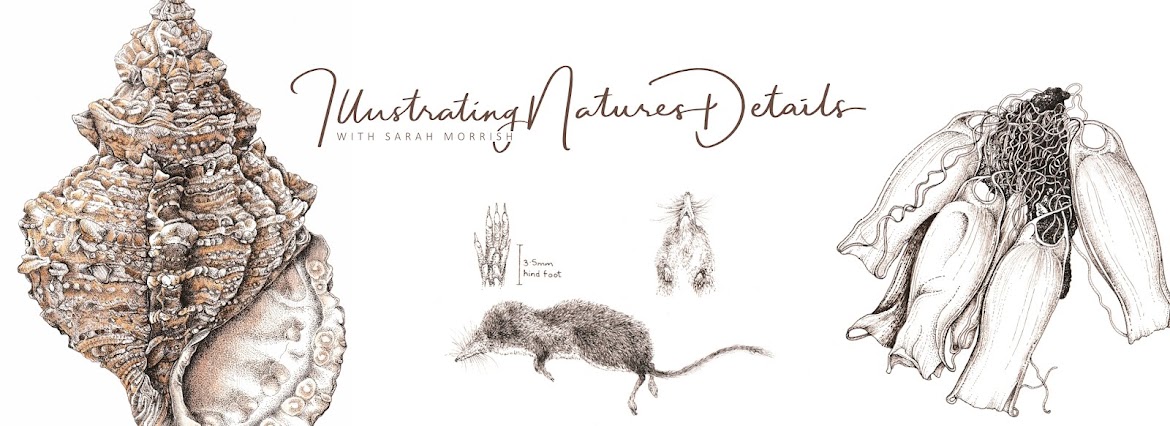A few weeks ago, it was time to get out the walnut ink that I had bought from that fab art shop in London, Cornelissen. I decided that I wanted to add another dimension to my pen and ink work by creating a tonal pattern to the paper surface.
I have long been an admirer of Dorota Haber-Lehigh and the exquisite watercolours she creates on a paper with a walnut ink base, especially her 'Fragments' series of work. The surface colour, tone and pattern so seems to suit autumnal/fall subjects.
It is not as heavy as watercolour paper so I had to make sure that I taped it down around each edge completely, so that when it dried, it went completely flat.
I was really interested in firstly, how the diluted walnut ink looked on the coloured paper options and secondly, the natural looking patterns that I could achieve.
Left to right: white, cream and fawn paper
I would add that there are other ways of producing a wide range of effects on the paper surface, one being spraying diluted walnut ink onto the damp paper from a small spray bottle - that is going to be my next experiment !
So what were my conclusions?
- The Stonehenge 100% cotton paper has quite a soft surface even before applying the water and ink, so I was aware that applying that much moisture may effect the 'tooth' of the paper. Once dried I tried it first with a dip pen. The paper certainly didn't like this and the ink was very easily absorbed and bled into the paper fibres which made it impossible to work on.
- Rather than using the two brushes I did to apply and manipulate the ink, perhaps a spray bottle used to apply the ink, will have less of an impact on the paper surface
- Next I tried a 003 Pigma micron black technical drawing pen and it took this really well, as you can see below. The other image shows a close up view of the paper surface and you can easily see the surface fibres.
- I was impressed with how the coloured Stonehenge paper suited this. Obviously the cream and fawn papers gave a warmer result, where as the white was less so. I liked all though.
- When I applied the watercolour wash after the ink work, the paper took the paint very well, but I was very gentle with it and let each layer dry before applying the next. Some blending was possible, specifically on the Maple samara blending the green and golden colours whilst still damp.
- Next I definitely want to try the technique on a heavier watercolour paper. So watch this space !
I haven't finished quite yet though - the video raised a few questions from viewers in terms of the durability of the walnut ink and also its origins.
Is walnut ink light-fast ?
In the past walnut ink has not been that durable and as well as not being stable the contents of the old style ink were quite acidic too and would therefore damage the support.
More recent formulations seem more durable (see below).
Is it water-resistant ?
Unfortunately no. Saying that though, when I applied the watercolour to my ink drawing there was no shifting of the surface colour. So, I think that as long as the base of walnut ink is diluted and further subsequent watercolour washes are applied carefully it should be ok.
But be aware if you were to use it for line drawing and then apply a wash.
Are the more recent inks actually made from walnuts ?
Several of them still are - see the table below for further information.
The yellow highlighted line refers to the ink that I have used.
The yellow highlighted line refers to the ink that I have used.





